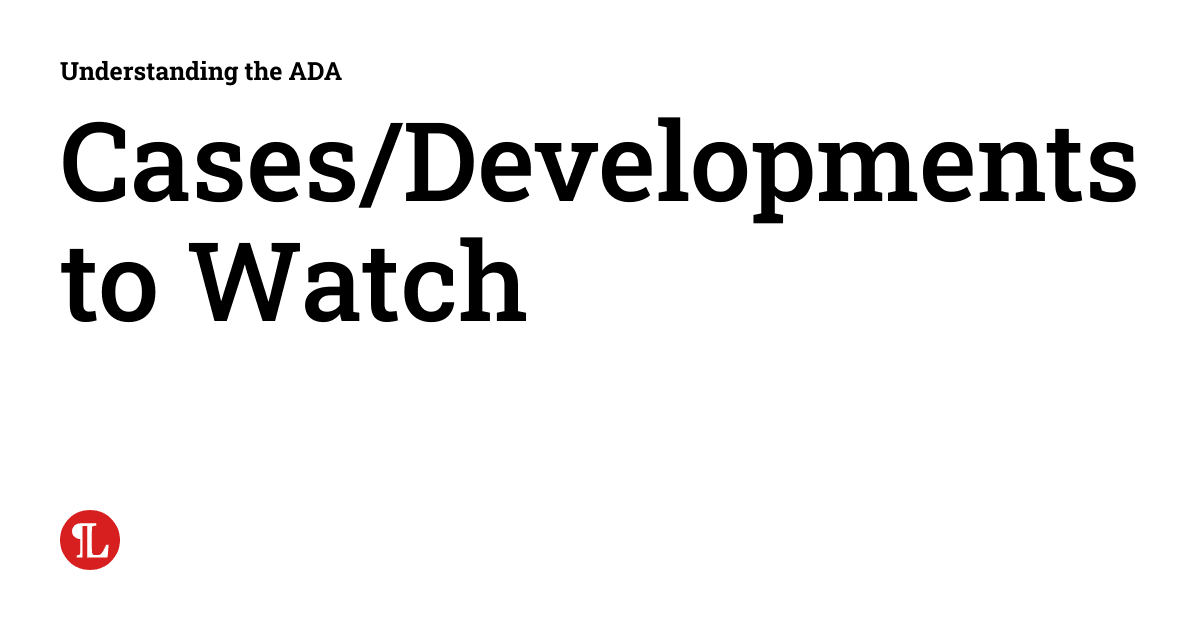
I thought I would do a different kind of blog entry this week. With the new administration, there have been so many dizzying developments. Also, the EEOC recently filed a spate of cases that bear watching as well. I thought I would highlight some of those developments.
I
Equal Employment Opportunity Commission v. BellSouth Telecommunications (No. 2:25-cv-137, United States District Court for the Eastern District of Louisiana)
In this case, the EEOC sued AT&T on January 17, 2025, with respect to a policy that screened out people with class III obesity, which is people with a BMI of 40 or greater. In particular, AT&T set up a weight limit for using equipment that was actually lower than the weight limit suggested by the manufacturer of the particular equipment. They then took adverse action against people who could not make that weight limit, including the plaintiff. One of the things that this will come down to is the question of direct threat, which we have discussed many times in the blog, such as here. We actually discussed a similar issue with respect to amusement parks, here.
II
Davis v. Laboratory Corporation
The Supreme Court decided to hear this case, which we blogged on here. In particular, the question the Supreme Court decided to hear is the question of whether a federal court may certify a class action under Federal Rules of Civil Procedure 23(b)(3) when some members of the proposed class lack any Article III injury. Predicting what the Supreme Court will do is a fool’s errand, but the way the question as phrased that the Supreme Court will consider does not bode well for plaintiffs, but you never know. You might also want to check out the Supreme Court decision in Laufer, which we discussed here.
III
EEOC Guidance on AI Withdrawn
The EEOC removed a stack of AI-related documents from its website on January 27, 2025. We have blogged on the EEOC guidance on AI previously, here. Also, I wrote a law review article on persons with disabilities and AI in employment, here. I agree with others discussing this development in a Law360 article by Anne Cullen, here (subscription required), that taking down the guidance doesn’t really change anything because using AI to screen out people with disabilities is still going to be a problem under the ADA.
IV
A.J.T. v. Osseo Area Schools
In this case, the Eighth Circuit ruled in March 2024, here, that children with disabilities claiming disability discrimination in educational settings under Title II of the ADA must meet a high standard to potentially receive monetary damages. In particular, the Eighth Circuit said that a deviation must be so substantial that it demonstrates wrongful intent. The Supreme Court decided to hear the case as the U.S. Court of Appeals are split. Again, predicting what the Supreme Court will do is a fool’s errand. That said, the Muldrow case decided by the Supreme Court, which we discussed here, may play a role in this analysis. I am not going to go out on a limb here and predict which way the Supreme Court, even configured the way it is, might decide this case.
V
EEOC v. Sam’s East Inc. (No. 1:25-mi-99999, United States District Court for the Northern District of Georgia)
On January 17, 2025, the EEOC sued Sam’s East Inc. for unlawful employment practices whereby the defendant had a policy of refusing to grant accommodation because the injury was not on the job. I have actually seen these policies come across my desk, especially when it comes to light duty situations. I strongly recommend that an employer simply not do this. It simply does not matter how a person become disabled for them to be protected under the ADA. To think otherwise, destroys the very purpose of the ADA as the incredible vast majority of people become disabled as a result of situations outside their workplace.
VI
EEOC Commissioners Are Terminated
Pres. Trump terminated Democratic EEOC commissioners whose terms had not yet expired. One of the Commissioners has hired a top-notch plaintiff side employment firm to consider the matter. Pres. Trump may have more authority to terminate the EEOC’s General Counsel than he does the actual Commissioners. Look for this to be tied up in litigation for quite some time.
VII
Federal Employees Return to Office
The new administration has made it very clear that it wants its employees in the office five days a week full time. There are many people with disabilities that benefit from working remotely. §501 of the Rehabilitation Act still applies. By statute, the §501 rules and liability standards are the same as title I of the ADA. So, expect lots and lots of litigation over remote work. The best preventive law way for dealing with remote work is a case that we discussed here. As a result of the pandemic, I strongly suggest that for the first two Samper factors attorneys add an “in person,” requirement to those criteria.
Interesting times. For those needing a distraction, we have the Super Bowl coming up, which promises to be a very good game between Kansas City (first team in history to go to three consecutive super Bowls), and Philadelphia. I will actually be visiting my daughter in college during basketball weekend at that time, so it will be fun to watch at least some of it with her.






